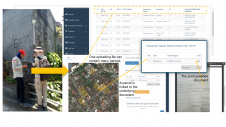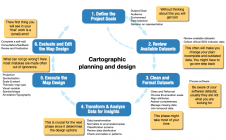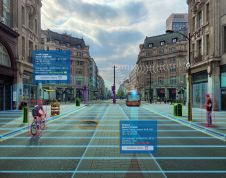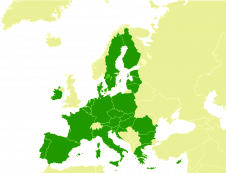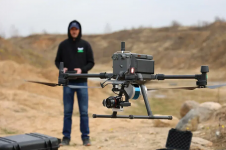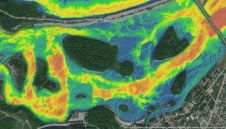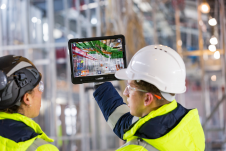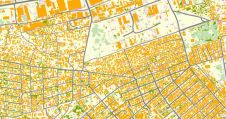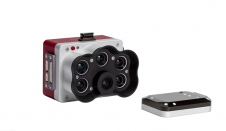How Going Digital Can Reverse Your Engineering Challenges
Nearly all engineering, architecture and construction (AEC) professionals focus on finding new ways to increase margins and reduce liability in their businesses. As technology moves so quickly, it can be difficult because there are so many available sources of information. It becomes a case of making time to use it.
But how does this relate to our day-to-day market? One of my colleagues received a very interesting email from an owner-operator client, stating:
“The biggest challenge that we have is that contractors seem to talk the talk at contract award time, but their implementation then drops off, as it’s not made a priority with project teams. As an owner-developer, we want to be an innovator and partner with contractors that truly will be early adopters and have the capabilities to deliver.”
It is difficult to determine what is delivering innovation in construction these days. Is it a terabyte of data, which has been handed over to the client with no historical or metadata attached, an original equipment manufacturer manual with the images, or drawings and data that may not meet the as-built/final supplied asset?
A joined-up system – such asProjectWiseandAssetWise– is a must for an asset owner of any type of project. As I discussed in other articles I recently wrote(How a Single Source of Truth Can Transform the Infrastructure Design IndustryandWhy You Need to Get the Design Process Correct), it is better to involve a system earlier rather than later.
的re are numerous systems on the market, and it’s not a one-size-fits-all situation. For example, if you have large infrastructure projects, you need stability. You don’t want the issue to keep moving down the line, from design to construction to operations. Several of the clients that I work with are coming at this issue from a completely different angle. They call it “reverse engineering the problem.”
If you are only looking for the short-term win, you will end up with many dark data silos, which is another set of problems. As a client, you want your project to be fully BIM-compliant.
Owner-operators are asking themselves these three questions:
- What do I need to manage the asset, especially because it is the longest part of the project life cycle?
- What do I need for construction, and does that link into asset management?
- 我需要设计和可行性仙女od, and does that link into the project management software?
To get there, you need a CDE: a connected data environment, not a common data environment.
Both of these systems exchange data on a project, but theconnected data environment(CDE)兼容的单一来源的事实。的CDE will manage, disperse, collect and store the data throughout the project’s life. This lifespan could be much longer than people think, especially when accounting for the number of refurbishments that an asset might go through over a 30-year period. Essentially, BIM ensures that all the correct information is readily available in the correct format, enabling the team to make the correct decision throughout the lifespan of an asset. The misconception, especially in the early days, was that BIM was all about creating an independent 3D model. This is not true. Instead, BIM is essentially the way a project is set up and run.
At the centre of BIM is one key obligation: the employer’s information requirements. These requirements define the information that the employer wishes to develop to run the asset. The employer sets out the contractual document at the beginning, ensuring that the appropriate information is created, and the systems are used throughout the project.
When talking about CDEs, the next term that we need to define is digital twin, which is a digital representation of a physical asset, process or system, as well as the engineering information that allows us to understand and model its performance. Typically, a digital twin can be continuously updated from multiple sources, including sensors and continuous surveying, to represent its near real-time status, working condition or position. A digital twin enables users to visualize the asset, check status, perform analysis and generate insights to predict and optimize asset performance.
A digital twin is used as a means of optimizing the operation and maintenance of the physical assets, including its systems and processes. As the information from a digital twin is analysed, numerous lessons can be learnt, giving the team opportunities to return maximum value from the real-life asset.
的lessons can be learnt via digital simulations to see when the optimal time is to service a piece of equipment without affecting the running of the asset. When you add in sensors and artificial intelligence, you get the analysis of real-time data and the comparison of this data with historical data.
According to The Gemini Principles published by the Centre for Digital Built Britain in December 2018, a digital twin is “a realistic digital representation of something physical. What distinguishes a digital twin from any other digital model is its connection to the physical twin.” The National Digital Twin is defined as “an ecosystem of digital twins that are connected by securely shared data.”
Looking back at the email that my colleague received from the owner-operator client, it is clear that organizations want to consolidate as much as possible into a single, cloud-based platform. They not only want to eliminate on-premise silos of duplicate information, but also want to create the ability to open the information to a new dynamic level of performance.
CDEs play a prominent role in the communication of best practices and contractual workflows with the construction industry. They are the solid foundation of digital twins.
Make your inbox more interesting.Add some geo.
Keep abreast of news, developments and technological advancement in the geomatics industry.
Sign up for free











